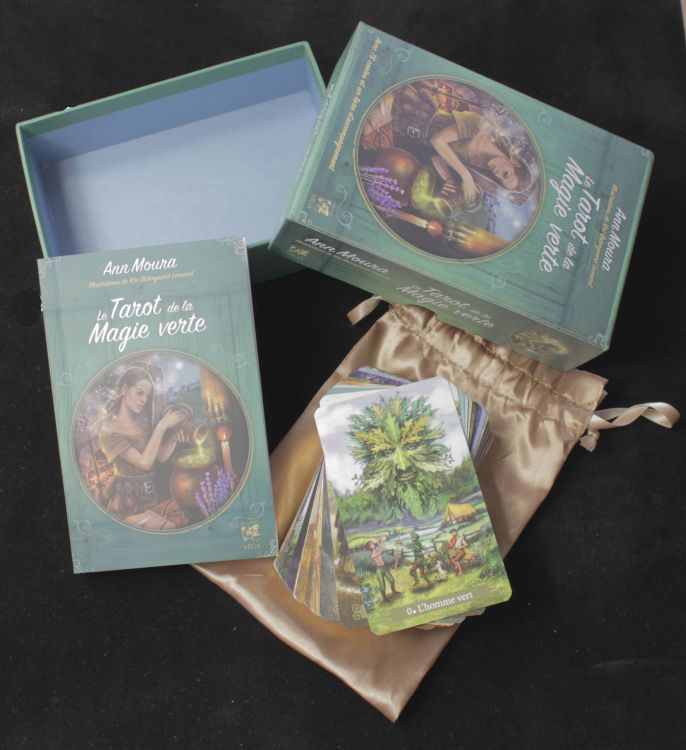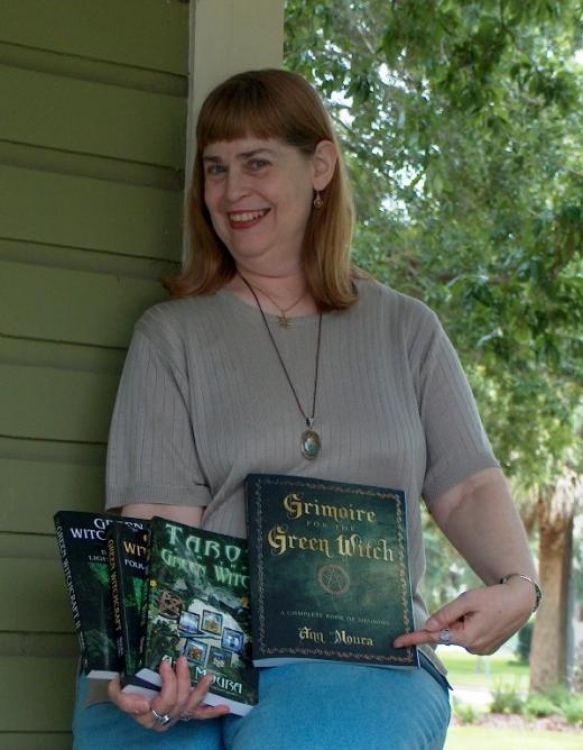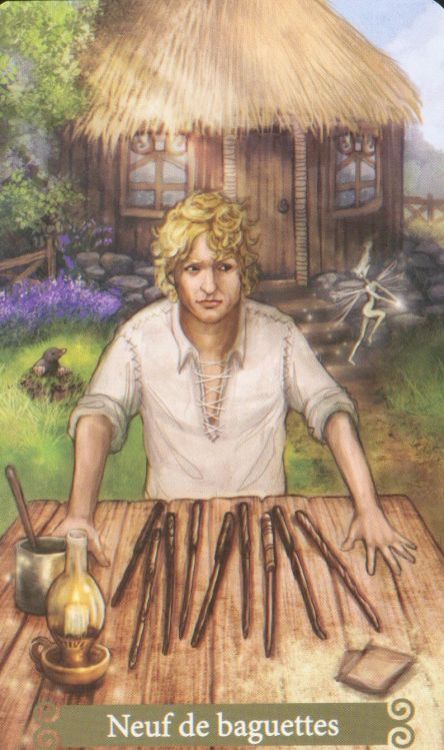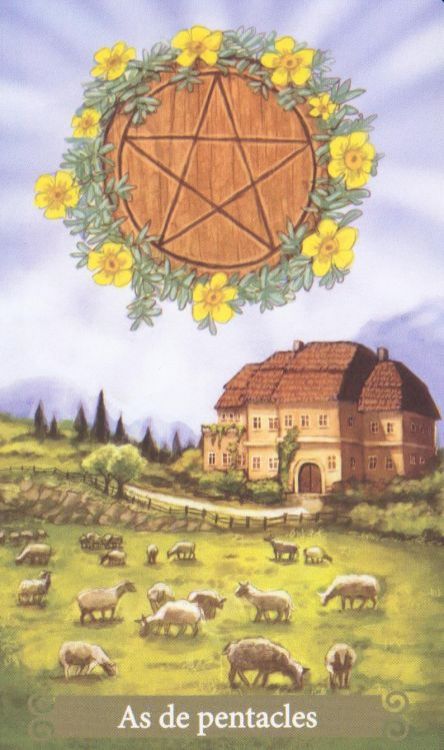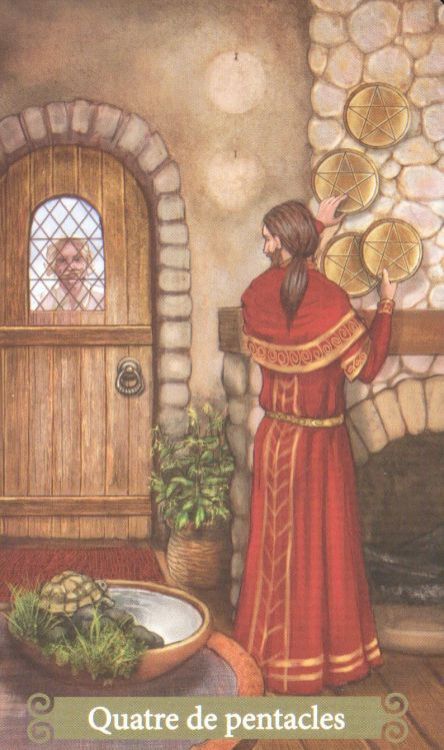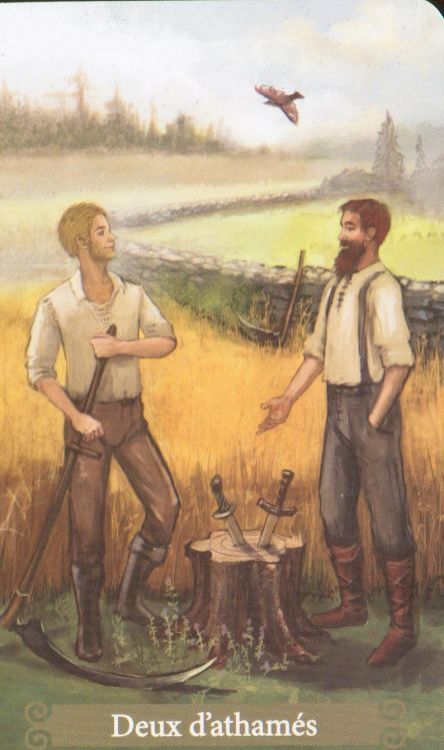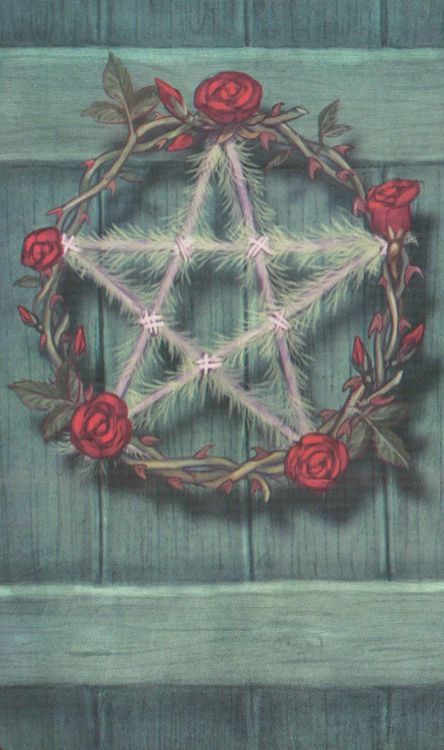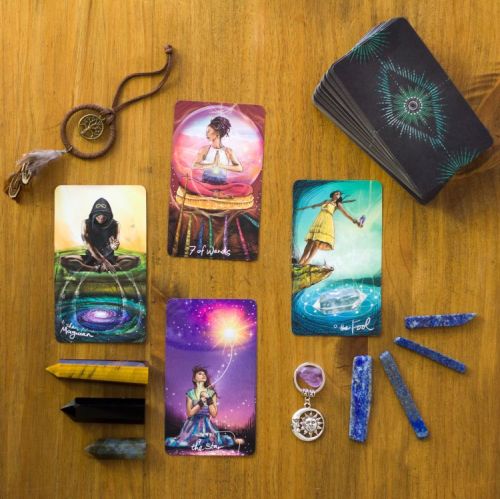At the opening of the game, one is seduced by the beautiful illustrations of the game (it's a question of taste, but I like them). One can regret however that certain symbolic details are not very visible (for example the man's ouroboros armband on card 6 - THE LADY AND THE LORD). The atmosphere of the illustrations is soft, perhaps even peaceful, with characters who smile quite often. No doubt this is one of the reasons why this tarot is popular.
When studying tarot, the reader may be disturbed by the symbolism used, one may or may not agree with the author's points of view. Perhaps Ann Moura could have deepened her study of tarot whether it is Rider-Waite-Smith or Marseille. Indeed, reading her bio, we can guess that she is not a tarot reader by profession. An in-depth work would have allowed her to propose symbols that are both original and closer to the usual conventions (if one is tempted to say that this was her goal).
Since the author has inherited a culture of pagana or shamanic tradition, I would have liked to read her teaching on a magical use of her tarot, through rituals, spells or other meditations. Certainly, she has written several books on Green Witchcraft practice and the booklet explaining her tarot is not a work for that. But if she had devoted a few chapters to teaching Green Witchcraft methods or practices, these pages would have been of great value.
Finally, the beginner will be delighted to have in his hands a deck of cards that is pleasant to look at. Unaccustomed to the mysteries of tarot, he will undoubtedly be able to quickly familiarize himself with the symbolic imagination of the author.
On the other hand, an experienced reader may be surprised by the iconography used. Convinced by the universe of the game and the beauty of the images, he will adapt, otherwise he will quickly pass his way to other tarot cards.
To learn more and deepen your knowledge of tarot, check out my article on the meanings of the 78 tarot cards or on the 22 Trumps (major arcana).

 Please note that this review is based on material and product in French. Depending on the edition you buy, the material could be identical, but also different on the packaging, the guidebook, the booklet, or the card stock . I'm sorry I can't systematically buy tarot cards and books in all editions (I don't receive gifts from publishers)! 😅
Please note that this review is based on material and product in French. Depending on the edition you buy, the material could be identical, but also different on the packaging, the guidebook, the booklet, or the card stock . I'm sorry I can't systematically buy tarot cards and books in all editions (I don't receive gifts from publishers)! 😅 